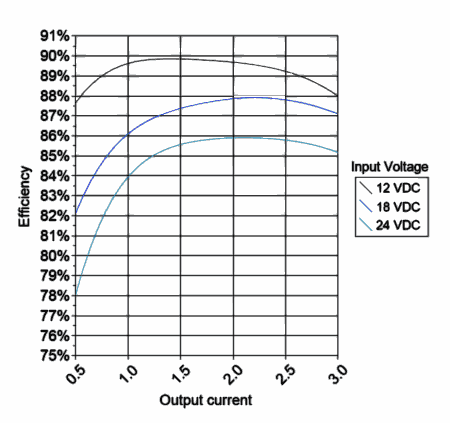plasmadrive
Full time elf
- Thread starter
- #46
The set up would have to be pretty marginal for this to happen.. but theoretically, I guess it could..David_AVD said:Another thing to be careful with is that when the input voltage to the DC-DC converter decreases (say due to voltage drop in the cabling), the input current increases.
If the input cabling is too thin, this can cause a snowball effect; more voltage drop -> more current draw -> even more voltage drop - even more current draw, etc.
The end result can be a input cabling overheating, a fuse blowing or the upstream power supply shutting down.


